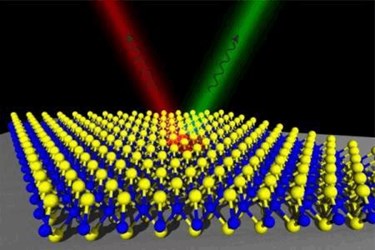Novel 2D Light Source Generates Photon Pairs
By Jof Enriquez,
Follow me on Twitter @jofenriq

Physicists from Julius Maximilian University of Würzburg (JMU) have designed a new light source based on transition metal dichalcogenide (TMDC) monolayers that emit photon pairs, which makes it suitable to carry encrypted information.
TMDCs are novel two-dimensional (2D) materials that hold great promise for nanoelectronic and photonic applications. They have generated great interest among researchers because they offer superior energy efficiency, carry much higher current densities than silicon, and are deemed more device-ready than perhaps the most-known 2D material, graphene.
Peeling away layers of TMDC crystals down to a single atomic layer reveals unusual optoelectronic properties ideal for novel electronics and ultra-fast data processors.
Researchers at JMU performed such a technique, using a sticky tape to repeatedly peel a multi-layer film from a TMDC crystal until only a single layer remained of the material. Then, they cooled this monolayer to just above absolute zero and excited it with a laser, which caused the material to emit pairs of photons.
"We were now able to show that a specific type of excitement produces not one but exactly two photons," explained Christian Schneider, a physicist at JMU, in a news release, reports UPI. "The light particles are generated in pairs, so to speak."
In a follow-up experiment, the researchers then sandwiched the monolayer between two mirrors and again excited it with a laser. The emitted photons bounced off the mirrors and back into the monolayer, where they excited atoms to create more photons.
"We call this process strong coupling," said Schneider. "The light particles are cloned during this process, in a manner of speaking. "Light and matter hybridise, forming new quasi particles in the process: exciton polaritons. For the first time, it is possible to detect these polaritons at room temperature in atomic monolayers."
The coupled photons produced by the novel light source behave similarly to laser, but they do not need an additional energy source beyond the initial excitation to sustain production of more photons. This makes the new light source highly energy efficient and ideal in studying certain quantum effects.
The research was performed by Dr. Christian Schneider, Professor Sven Höfling, and their research team from the Chair of Technical Physics of JMU in Bavaria, Germany.
